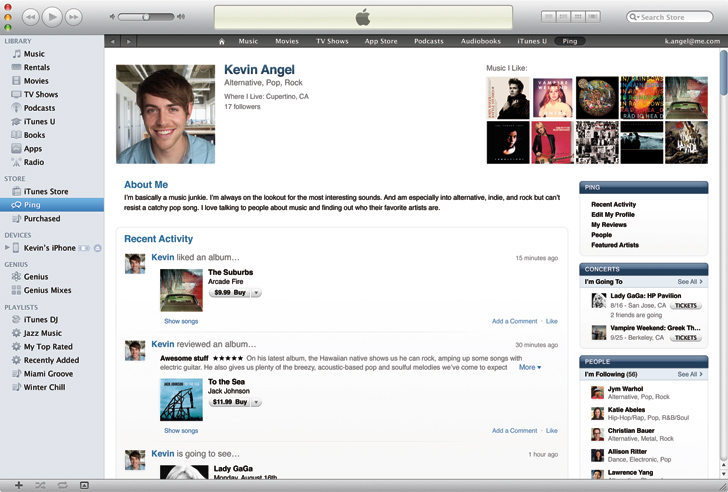Looking Back on Ping, Apple’s Failed Social Media Platform
 Credit: Apple
Credit: Apple
Toggle Dark Mode
When a new Apple product or service is announced, most everyone assumes it will be a success. This month, ten years ago, Apple’s first-ever social network, Ping, was released to the public. However, Ping wasn’t the huge success Apple and many others were betting on. Instead, this attempt at competing with Facebook, Twitter, and even MySpace, got the ax just two years after its launch.
How Did Ping Work?
First introduced by Steve Jobs on September 1, 2010, Ping was a Web 2.0 site built-into iTunes that would mainly focus on music. In case you’re not familiar with the term, Web 2.0 is basically a website that focuses on dynamic and user-generated content, like most modern websites we see these days.
Steve Jobs said that Ping was a social network where “Facebook and Twitter meet iTunes,” and he wasn’t wrong. Ping had look and feel that was similar to Facebook back in the day, combined with some Twitter-like features.
You accessed Ping by going into iTunes 10.0 and tapping on the Ping section. From there, you’d get a feed filled with posts and songs from friends and other artists.
Just like Twitter, you could search for your friends, celebrities, or artists and follow them. In their profile, you would see all the posts they’ve made, along with the music they share and their favorite songs.
Plus, if you were on an artist’s page, you could also see all their upcoming concerts. For everyone else, you could see the concerts they were thinking of going to, in case you wanted to go as well.
Another cool feature at the time was a Ping chart, that showed which songs and albums that the people you follow downloaded most.
Why Did Ping Fail?
In theory, Ping sounded like a cool social network with the potential to become as big as Facebook or Twitter were starting to become in 2010. Not only was it an Apple service, but it was already available for over 160 million iTunes users right from the start.
Ping was officially shut down on September 30, 2012. So, what happened? Why did Ping fail?
First, people weren’t that invested in Ping. Tim Cook himself said back in 2012 that “the customers voted and said ‘this isn’t something that I want to put a lot of energy into.'”
Despite offering some exciting features for music lovers, people just weren’t that interested in using Ping to share their musical tastes. Besides, Ping was made for iTunes users, which at the time were over 160 million. But, clearly, not all of them were using it.
The exclusivity of Ping on iTunes left out those who didn’t have iTunes, while Ping users may have felt isolated by the lack of friends on board.
For most people, downloading and installing iTunes just to use its social network was too much of a hassle. It was just so much easier to log into Facebook and find your friends, than being forced to become an iTunes user first.
In the end, after being alive for only two years, Apple finally decided to close Ping for good. At least the company didn’t take as long as Google to close its social network. Albeit, Apple did try again to make another social network with Apple Music Connect, which ultimately was shut down as well.








